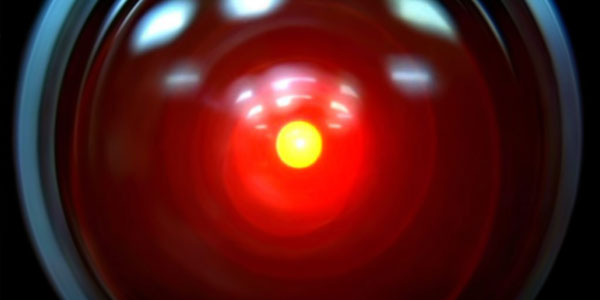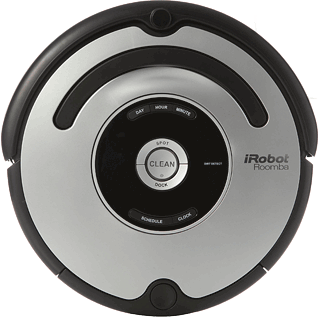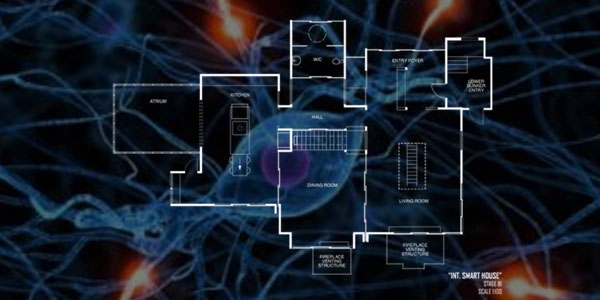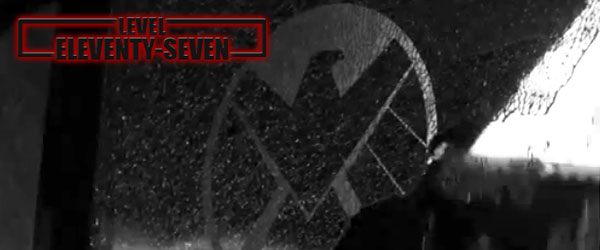The Techno-House

The idea of an automated living space is nothing new. Mostly it’s used for spaceships to make them look even more high-tech (such as in Star Trek or 2001: A Space Odyssey). After all, if someone who is traveling at a high rate of speed in a massive ship outside of Earth’s atmosphere and used a doorknob or a light switch, then the vessel was probably built by the Amish.
Sure, it’s all futurey and stuff, but can today’s technology really make it happen? Yup.
The Master Computer

A good sci-fi abode should have a master computer operating the various items in the quarters. It would be voice-controlled with voice response. I would give the computer a woman’s voice and call her CHANDRA (Computerized Home Automation and Networked Data Retrieval Assistant). True sci-fi geeks will get the reference.
CHANDRA would be a voice-controlled system which can control the automated functions in the home, much like the computer in Star Trek. Similar function has been used in smart phones for quite some time. But the talk-back function has, so far, been less than Star Trek-like. It’s certainly no HAL-9000. Nonetheless, it would control the automated functions of the house. That includes various things from the lighting, to environmental systems, and even home security. (Don’t worry. There’s no airlock to lock you out of … Dave).
Abundant Displays
Throughout the living quarters, there would be various mirrors and glass surfaces with interactive monitor displays built in. This is a visual interface with CHANDRA. The displays would be in every room in the house. These surfaces, much like what are being developed by Corning, would serve as information displays, such as schedules, weather, news, and even television. Some rooms can even be equipped with a camera (at the resident’s discretion of course) for the purpose of visual telecommunications (like Skype or Google Hangouts). The cameras should probably have physical on/off switches to prevent the cameras being turned on or left on at rather inopportune times.
[youtube=http://www.youtube.com/watch?v=X-GXO_urMow]
Cellular Communications
Let’s face it. Telephone numbers and email addresses are on the way out. Each has served its purpose. But that time is very quickly passing. Telephone numbers used to be designated by physical location so the operator knew where to patch a call. Now it’s all done by automatic switching. Cellular phones were, by a similar token, designated by area code and provider. But now when someone changes carriers and even moves to a different area code, the number stays the same. Plus, in the USA and Canada, there can be no more than 6.4 trillion possible combinations. Granted, that might be more than will ever be necessary, especially since older numbers can be reused. But it’s still a long string of digits. With today’s technology, that should be completely unnecessary.
Then there’s email. The Post Office Protocol which is used in emailing relies on Simple Mail Transfer Protocol (SMTP). SMTP was designed to work on a network of no more than five servers! In SMTP, messages are broken down into smaller pieces and sent randomly around the network. When the pieces arrive at their destination, they are reassembled into the email which the recipient can then read. This usually happens within the scope of a couple of minutes. But if any server goes down, a piece of email can be held in limbo until that server comes back online. This can sometimes take six months or more! Email isn’t always that reliable.
So what does more recent technology have to offer? Consider social networking services like Facebook and Twitter where messages are sent directly into a file on a remote server which the user can then retrieve. Then there’s conversational systems ranging anywhere from ICQ to Skype. This is a direct, point-to-point information transfer. There’s no breaking up of messages and scattering them. Since these systems rely on user handles, often linked to a real name, it’s easier and more practical than a phone number. As long as the proper username and password are used, it’s not even limited to a particular device. And since user databases are typically searchable, even with pictures included, things like the White Pages and the Yellow Pages are rendered completely obsolete.
So if someone has a mobile device with such services installed, then when it is plugged in, not only does the device get charged, but CHANDRA becomes the communications device! That’s right. When somebody calls, the ID can be displayed on the many display devices in the house, and the user can answer it using the house itself! So what if there are multiple devices plugged into CHANDRA? Users can be tracked throughout the house so that the person whose device is receiving the call gets it in the room that the user is in. So if one person who is in the den, in a bedroom, or sitting on the toilet gets a call, it won’t disturb the person who is watching the 83rd James Bond movie in the living room.
Even More Glass
Expect there to be even more glass surfaces, not just graphic displays. There are multiple reasons for this. One reason is for aesthetics. There are a lot of design capabilities for glass-based substances. But the main reason is that it’s less porous than most other surfaces. It doesn’t hold dirt and other grime quite as much. Sinks, floors, toilets, showers, and various counter tops would be simple to clean and would even be germ-resistant. Though I probably wouldn’t advise glass towels, even for serious germophobes.

Automated Maid Service
The Roomba is a cute little device. Simply start it up and leave the room. When you come back, the vacuuming is done. Now imagine more complex devices controlled and orchestrated by CHANDRA. Based on necessity or command, out come the cleaning devices. When you go to work or out for a little fun, the cleaning is done by the time you return. The floors are clean and there’s a mint on your pillow. Okay maybe there’s no mint on your pillow. I ate it before you got there.
Customized To The Inhabitants
The more a user interacts with CHANDRA, the more CHANDRA gets to know the user. Then CHANDRA can deliver the best living experience to the inhabitant. Consider Star Trek: Insurrection. Captain Jean-Luc Picard asks the computer to play a particular style of music and that it should be upbeat. The computer then delivers something that specifically fits Picard’s tastes. Now consider Pandora. It delivers music specifically based on what it has learned about the user’s preferences. This can go far above and beyond music. Even the Internet experience, including search engines, social networks, and general browsing, are being run on artificial intelligence (AI) algorithms which learn from the user’s preferences and deliver content based on those preferences.
Imagine the lighting adjusting in design, intensity, and color depending on your mood or desires. Ambient sounds can be adjusted as well. The opacity of the windows can be changed. Even the very speech that CHANDRA uses can alter based on the needs and desires of the user. The system can constantly adjust based on ongoing user input. CHANDRA might even know the user better than the user does.
Automatic Doors
Do I really need to explain this one? If you don’t know about automatic doors and how they work, then you haven’t been to a major retail outlet since the 1970s. Something lets the door know somebody is there (such as a pressure switch or a motion detector) and the door automatically opens. Simple enough. But let’s get all Star Trekky with this.
If CHANDRA can track users in the house so they can get their phone calls without hauling their phones with them, then CHANDRA can also determine which users can go freely through which doors and which users need permission. This is especially useful when dealing with an apartment scenario. But it may not save little Sally’s diary from little Timmy’s prying eyes. It’s not so much for the lack of security since CHANDRA can be quite secure. It’s just that Sally blogs now and everybody in the world can read her diary.
Adjustable Furniture
Furniture that can adjust to the user is nothing new. Cars use technology which can identify a person and automatically adjust to that person’s preferences. Sleep Number beds can have their hardness adjusted to the user’s preferences. Now what if CHANDRA can identify a user and can customize the settings to that user? If a person sits on the couch, that section is made to fit that person. If the person lays down, it once again adjusts the settings. If the user lays inverted with their legs hanging over the top, CHANDRA tells the person to turn around and sit properly since CHANDRA was programmed by a woman who is also a mother.
So there you have it, the house of the future using applications of current technology. It’s a little something to make your current abode look archaic, outdated, and boring.
… Now I’m depressed.
![]()





Very Entertaining!
Reblogged this on Daniel C. Handley and commented:
Written for SciFi4Me.com
Very interesting technologies!